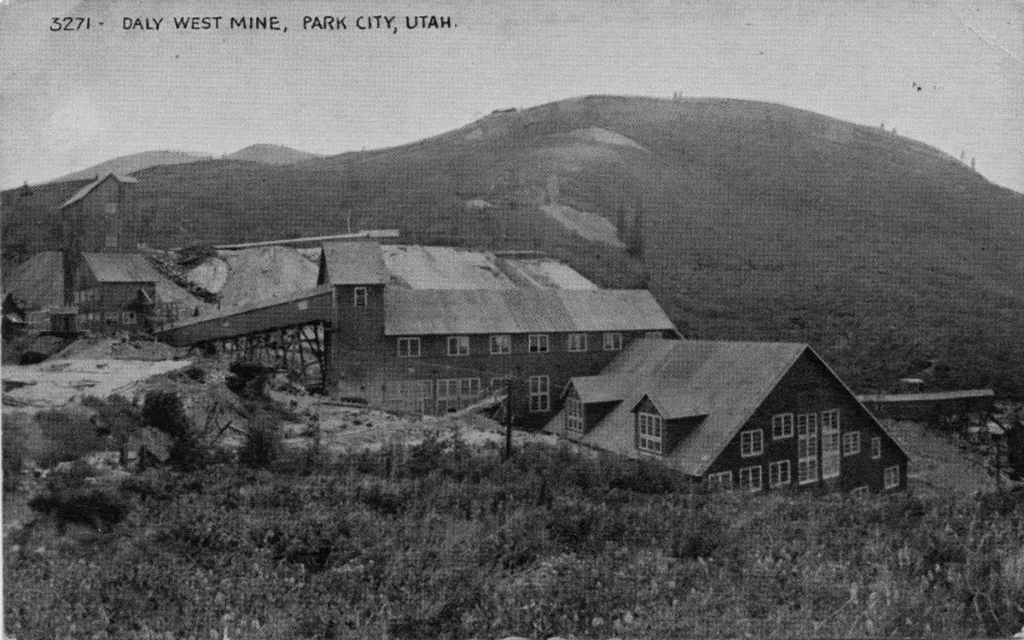Entry into World War II left Park City’s mines shorthanded. By early 1942, a total of 346 local men had been called up for military service. The Park Utah was short 150 workers and running only one shift a day due to the lack of employees. This unavailability of laborers would become a major cause of the deaths of three well known and experienced miners.
In miner’s parlance, a winze is an inclined passageway from a drift, usually sunk downward following a vein of ore. Ed Walker, 32, of Oakley, and Ted Johnson, 25, of Park City, were working on the 1,400-foot level of the Daly West section of the Park Utah Consolidated mine at about 2:30 p.m. on April 23, 1942. Johnson went after some powder while Walker climbed down fifty feet into a nearby winze to get a blow pipe, a compressed air device used to blow loose materials from a blasting hole. The two agreed to meet again shortly at the head of the winze.

Credit: Park City Historical Society and Museum, Thomas F. Hansen Collection
After waiting a few minutes in the main shaft, Johnson became alarmed when Walker failed to return and dropped into the winze to see what was delaying his partner. His carbide lamp went out as he descended a ladder. He felt himself becoming dizzy and weak. Johnson found Walker, who was wearing an electric battery head lamp, lying motionless and tried to move him. Beginning to lose consciousness, Johnson realized that he was in bad air and with much effort managed to climb to the top of the winze again and stagger about 100 feet down a drift to where 44-year-old Dewey Lockhart and Wallace Perry, 40, of Park City, were working. Johnson told them of his fears for Walker.
Lockhart, a timberman, had 15 years of mining experience and Perry 16 years as a mucker. Both had a thorough knowledge of the mine. Johnson warned them of the “dead air” and advised them to sound an alarm. They knew better than to go after Walker, yet the two courageous workmen, with little regard for their own lives, rushed heroically into the winze in an attempt to bring their stricken brother-miner out. Neither Lockhart nor Perry came back. The three bodies were found in the bottom of the winze by mine rescue squads.
A coroner’s jury determined that the men had drowned in gases produced by explosives. Fatal percentages of poisonous carbon monoxide and of non-poisonous, but oxygen-replacing carbon dioxide, together with some of nitrogen had snuffed out the men’s lives.
The Park Record reported that the entire community was deeply grieved and shocked by the accident that left eleven children fatherless. Cause of the dead air pocket, as determined by C. W. Spence, state mine inspector who participated in the rescue work, was an accumulation of blasting powder gas which had settled in the winze that had not been worked for the past seven days because of a shortage of men.